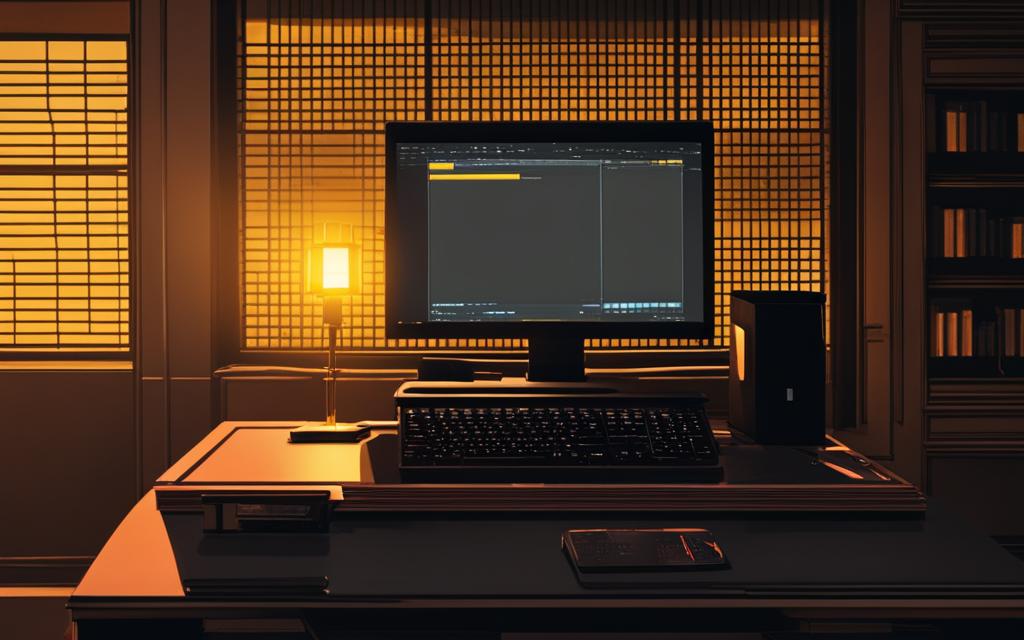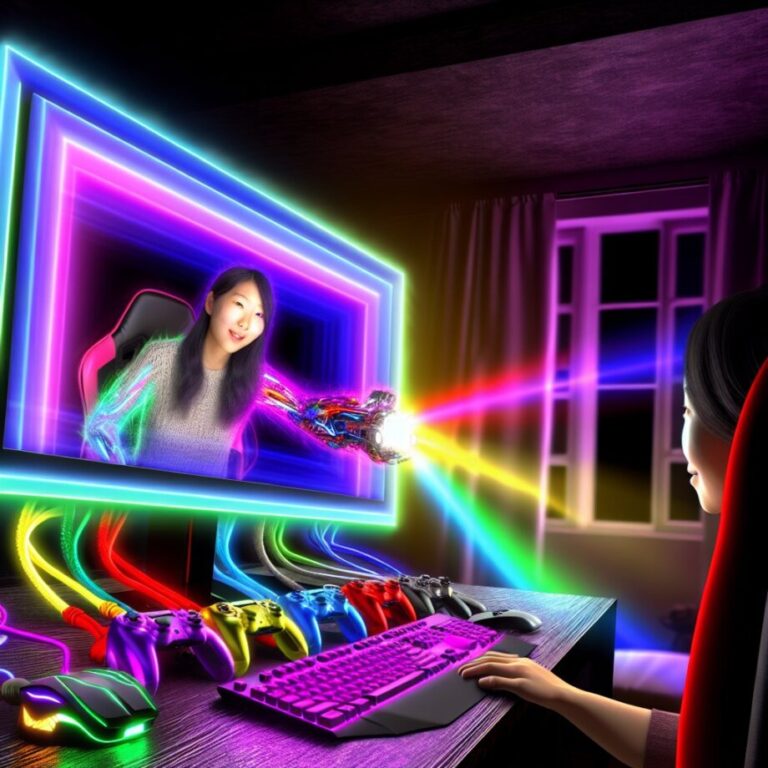Is your computer refusing to start up? Are you experiencing issues during the boot-up process? These are common computer startup problems that can be frustrating to deal with. But don’t worry, we have got you covered. In this section, we will provide you with step-by-step instructions on how to troubleshoot and fix common computer startup problems. By following these troubleshooting steps, you can get your computer up and running again.
When your computer won’t start, it can be indicative of a few potential causes. In the following sections, we will explore the potential causes behind this issue and provide you with troubleshooting steps to help you get your computer up and running again. We will also guide you through the process of identifying and resolving hardware-related issues, updating drivers and software, and reinstalling the operating system if necessary.
Whether your computer startup issues are software- or hardware-related, we will walk you through every step necessary to resolve them. By the end of this section, you will have gained the knowledge and skills required to tackle any startup issue that comes your way.
Don’t let common computer startup problems bring you down. With our comprehensive computer startup troubleshooting guide, you can troubleshoot and fix them easily and efficiently. Let’s get started!
Computer Won’t Start: Potential Causes and Solutions
When your computer won’t start, it can be a frustrating experience. But before you panic, let’s take a look at some common causes and troubleshooting steps you can take to get your computer up and running again.
Faulty Power Supply
One possible cause for your computer not booting up is a faulty power supply. To determine if this is the issue, check if the power supply fan is spinning and listen for any unusual noises. If it’s not working properly, you will need to replace it.
Loose Connections
Another common cause is loose connections. Check all cables and ensure they are correctly plugged into the right ports. Also, verify that your RAM and graphics cards are correctly seated in their respective slots.
Failed Hard Drive
If your hard drive has failed, you may see the message “No bootable device found.” To check if this is the issue, enter the BIOS and see if your hard drive is detected. If not, you will need to replace it.
Memory Issues
Memory problems can also prevent your computer from starting up. To check if this is the issue, remove and reseat all memory modules. If that doesn’t work, try booting your computer with one memory module at a time, removing the faulty one.
Operating System Errors
If your computer freezes during the boot process or displays a blue screen error, it may be due to operating system errors. Try booting in Safe Mode and troubleshooting any software-related issues. If necessary, reinstall your operating system.
By following these troubleshooting steps, you can identify and fix the common causes of a computer not starting up. Remember to take your time, and if all else fails, seek professional help to resolve the issue.
Computer Keeps Restarting: Troubleshooting Steps
If your computer keeps restarting, it can be frustrating and may indicate a more serious problem. Here are some troubleshooting steps you can take:
- Check for overheating: Overheating can cause your computer to restart. Make sure your computer is not overheating and that all fans are functioning correctly.
- Scan for malware: Malware infections can cause your computer to restart. Scan your computer with reliable anti-malware software to remove any infections.
- Update drivers: Outdated or corrupted drivers can cause your computer to restart. Update your drivers to the latest version.
- Check hardware connections: Loose or faulty hardware connections can cause your computer to restart. Check all connections and ensure everything is properly connected.
- Perform a System Restore: If your computer started restarting after installing new software or drivers, performing a System Restore to a previous version may help resolve the issue.
If none of these steps fix the problem, you may need to seek professional help or consider reinstalling your operating system.
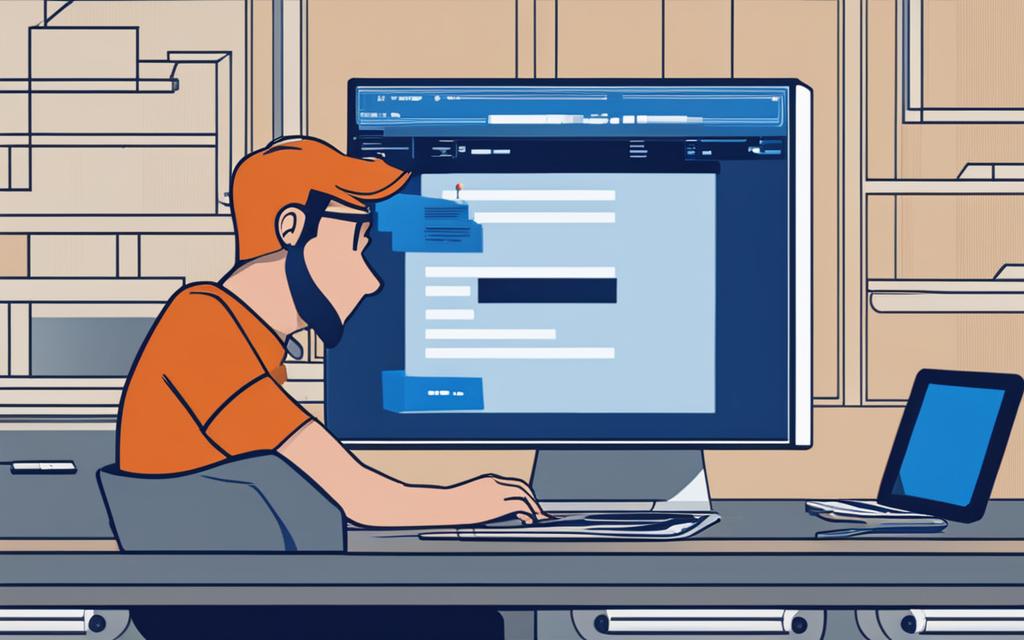
Startup Repair: Fixing Common Issues Automatically
If you’re experiencing common computer startup problems, Windows provides a built-in tool to help you troubleshoot and fix them automatically. The Startup Repair tool is designed to diagnose and repair problems that may be preventing your computer from starting up properly.
How to Use Startup Repair
The process for using Startup Repair will vary depending on your version of Windows. Here are the general steps:
- Insert your Windows installation disc or a system repair disc, and then restart your computer.
- Choose your language and other preferences, and then click “Next”.
- Click “Repair your computer”.
- Select the operating system that you want to repair, and then click “Next”.
- Click “Startup Repair”.
Windows will then scan your system for problems and attempt to fix any issues that it finds. Depending on the severity of the problem, this process may take several minutes to complete.
When to Use Startup Repair
Startup Repair should be used when your computer is experiencing issues such as:
- Blue screen errors during startup
- System crashes or freezes during startup
- Startup programs not starting properly
- Corrupted system files preventing Windows from starting up
If your system is experiencing more severe problems, such as hardware failure or a corrupted operating system, Startup Repair may not be able to fix the issue. In these cases, you may need to seek professional help or reinstall your operating system.
“The Startup Repair tool is designed to diagnose and repair problems that may be preventing your computer from starting up properly.”
Startup Repair can be a valuable tool for quickly identifying and fixing common startup issues. If you’re experiencing problems with your computer’s startup, give it a try before resorting to more drastic measures.
Checking Hardware Connections: Ensuring Proper Start-Up
If your computer is not starting up, faulty hardware connections can often be the culprit. Therefore, it is essential to check and ensure all your hardware components are correctly connected.
Before opening your computer’s case, make sure it is unplugged from the power source. Then, open the case and check for any loose cables or components that may have become dislodged. Pay particular attention to the following:
| Hardware Component | Location |
|---|---|
| Power supply cables | Motherboard and hard drive |
| RAM modules | Memory slots |
| Expansion cards | PCI or PCIe slots |
Once you have identified any loose connections, gently push them back in to ensure that everything is properly seated. Then, try starting up your computer again to see if the problem has been solved.
If checking the hardware connections doesn’t resolve the issue, consider consulting with a hardware professional or attempting other troubleshooting steps outlined in this guide.
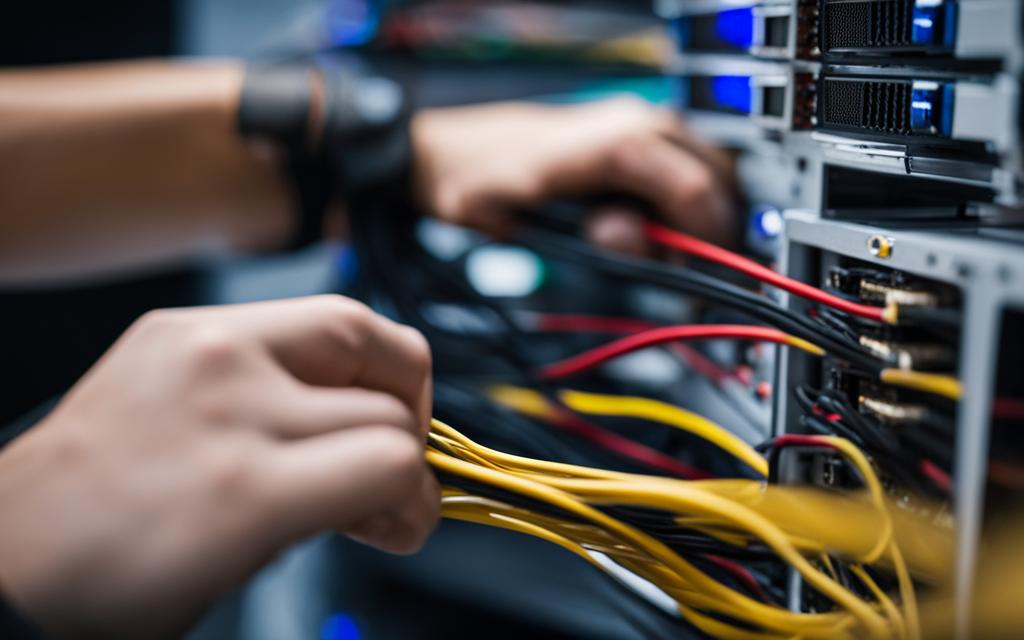
Resetting BIOS Settings: Restoring Default Configurations
If incorrect BIOS settings are causing your computer to have trouble during start-up, resetting them to their default configurations can help. Here’s how to go about it:
- First, restart your computer. During the process of restarting, press the appropriate key to enter the BIOS setup.
- Once in the BIOS setup, navigate to the option that allows you to reset the settings to their default configurations. This option could be labeled “Reset to Default,” “Load Setup Defaults,” or something similar.
- Select the option and confirm that you want to reset the BIOS settings.
- Finally, exit the BIOS setup and allow your computer to restart normally.
Keep in mind that resetting the BIOS settings will restore them to their default values, which may affect other settings that you have previously customized. Be sure to check and adjust any necessary configurations after the reset.
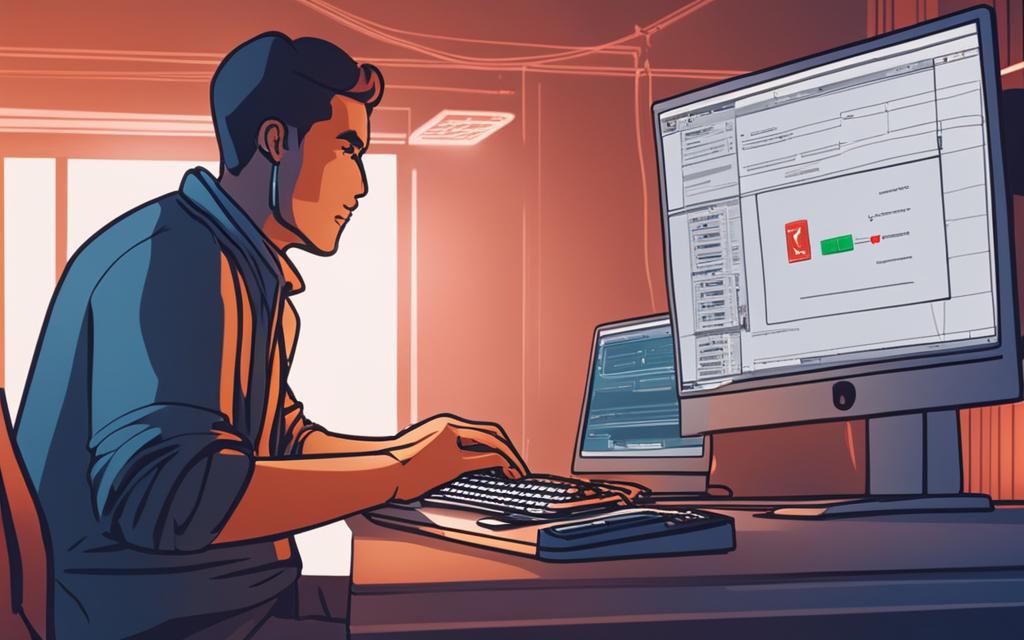
Overall, resetting the BIOS settings should be a straightforward solution to any start-up issues that stem from incorrect BIOS configurations. However, if the problem persists, you may need to explore other troubleshooting steps such as those outlined in the previous sections.
Safe Mode Boot: Troubleshooting Software Issues
If your computer is not starting up in normal mode, but it is starting in Safe Mode, it may suggest a software issue is the root cause of the problem. Safe Mode loads only basic software necessary for the computer to start, so it is a useful tool for troubleshooting software-related startup issues.
How to Boot in Safe Mode:
- Restart your computer and press F8 key repeatedly before the Windows logo appears.
- Select ‘Safe Mode with Networking’ from the Advanced Boot Options menu using arrow keys and press Enter.
- Enter your user account credentials (if prompted) and click on ‘Yes’ to start in Safe Mode.
Once in Safe Mode, you can try the following steps to troubleshoot software issues:
Step 1: Uninstall Recently Installed Software:
If your computer started experiencing issues after you installed new software, try uninstalling that software and restarting your computer. Here’s how you can do it:
- Click on the Start menu and select ‘Control Panel.’
- Click on ‘Programs and Features.’
- Select the software you want to uninstall and click ‘Uninstall.’
- Follow the on-screen instructions to complete the uninstallation process.
- Restart your computer and try to start up in normal mode.
Step 2: Run System File Checker (SFC) Scan:
SFC scan checks for corrupted or missing system files and repairs them. Follow the below steps to run an SFC scan:
- Click on the Start menu and type ‘cmd’ in the search bar.
- Right-click on ‘Command Prompt’ and select ‘Run as administrator.’
- Type ‘sfc /scannow’ and press Enter.
- Wait for the scan to complete.
- Restart your computer and try to start up in normal mode.
Step 3: Update or Rollback Drivers:
Outdated or corrupt drivers can cause startup issues. Here’s how you can update or rollback drivers:
- Click on the Start menu and select ‘Device Manager.’
- Right-click on the device driver you want to update/rollback and select ‘Properties.’
- Click on the ‘Driver’ tab and choose ‘Update driver’ or ‘Rollback driver.’
- Follow the on-screen instructions to complete the update or rollback process.
- Restart your computer and try to start up in normal mode.
If your computer still won’t start up in normal mode, it may suggest a more severe software issue, and you may need professional assistance to resolve it.
Running Diagnostic Tools: Identifying Hardware Failures
If your computer is still failing to start up, even after attempting the previously discussed troubleshooting steps, it is time to run some diagnostic tools. These handy tools will help you identify any hardware failures that may be causing your computer startup issues.
Before you begin, make sure that all external devices and peripherals are disconnected from your computer, except for the keyboard, mouse, and monitor. This will ensure that the diagnostic tests focus solely on your computer’s internal hardware.
Diagnostic Tools Overview
There are several diagnostic tools available that can help you identify and fix hardware-related startup issues. Here are a few of the most common diagnostic tools:
| Diagnostic Tool | Description |
|---|---|
| Windows Memory Diagnostic Tool | This tool checks for any issues with your computer’s RAM memory modules. |
| Hard Drive Diagnostic Tool | As the name implies, this tool checks for any issues with your computer’s hard drive. |
| Processor Diagnostic Tool | This tool checks for any issues with your computer’s processor or CPU. |
| System Information Tool | This tool provides information about your computer’s hardware and software configurations. |
You can access these diagnostic tools through the Windows Recovery Environment (WinRE). To enter WinRE, restart your computer and press and hold the F8 key until you see the Advanced Boot Options screen. From there, select “Repair Your Computer” and then select “Troubleshoot” > “Advanced Options” > “Startup Repair” or “Command Prompt”.
Once you have accessed the diagnostic tool you need, follow the on-screen instructions to run the test. The tool will then identify any hardware failures and suggest a solution to fix them.
Keep in mind that the results of these diagnostic tests are not always accurate. If you suspect that there is a hardware issue despite a diagnostic test coming back as “clean,” seek the advice of a professional computer technician.
Reinstalling the Operating System: A Last Resort
If all else fails and you are still facing computer startup issues, reinstalling the operating system may be the last resort. This process involves wiping out everything on your hard drive and reinstalling the operating system from scratch. Before proceeding with this step, make sure you back up all important data to an external storage device.
You can reinstall Windows or your preferred operating system using a USB drive or installation disc. Here’s how:
- Insert the USB drive or installation disc into your computer and restart it.
- Press the key that appears on your screen to enter the boot menu. This key varies depending on your computer’s manufacturer but commonly includes F2, F12, or Delete.
- From the boot menu, select the USB drive or installation disc as the boot device.
- Follow the on-screen instructions to reinstall the operating system.
After completing the installation, make sure to install all necessary drivers and updates to ensure your computer runs smoothly. You should also install antivirus software to protect your computer from malware and other security threats.
Reinstalling the operating system is a drastic measure that should only be taken as a last resort. It can be time-consuming, and you may lose all stored data if not backed up properly. If you’re unsure about how to proceed, seek professional help to avoid any potential complications.
Updating Drivers and Software: Keeping Everything in Check
If you’re still experiencing computer startup issues despite going through all the troubleshooting steps outlined in this guide, outdated drivers or incompatible software could be the culprits. Here’s how you can update your drivers and software to ensure seamless startup operations:
- Identify the drivers and software that need updating: Check your device manager or task manager to see which drivers or software need updates. You can also use third-party software to help you identify outdated drivers and software.
- Download the latest updates: Visit the websites of the manufacturers of your hardware components and software to download the latest updates. You can also use device manager or task manager to download and update drivers and software.
- Install the updates: Once you’ve downloaded the latest updates, install them on your computer following the instructions provided. Be sure to restart your computer after installing updates to ensure they take effect.
By updating your drivers and software, you can ensure that your computer is running smoothly and avoid any potential startup issues. Remember to regularly check for updates and install them as soon as they become available.
Conclusion: Troubleshooting Common Computer Startup Problems
Dealing with computer startup problems can be frustrating, but with the right troubleshooting steps, you can overcome them. By following the comprehensive guide we’ve provided, you can identify the root cause of your computer startup not working and get it up and running again.
Approach Each Step Carefully
The key to successfully troubleshooting computer startup issues is to approach each step carefully. Rushing through the process may lead to further complications or even irreversible damage to your device. Take your time and follow the instructions closely to ensure that you’re identifying and resolving the issue properly.
Seek Professional Help If Needed
While most computer startup problems can be resolved using the troubleshooting steps outlined in this guide, there may be instances where you need the assistance of a professional. Don’t hesitate to reach out to a qualified technician or support service if you’re having trouble resolving the issue on your own.
Overcome Any Startup Issue
With the information provided in this guide, you should be equipped to tackle any common computer startup problem that comes your way. Remember to remain patient and methodical, and don’t be afraid to seek help if needed. By following these tips, you can get your computer back up and running in no time.
Keep Your Computer Running Smoothly
Maintain your computer’s optimal performance by performing routine maintenance tasks such as cleaning up your hard drive, updating your software and drivers, and ensuring that all your hardware components are properly connected. This will help prevent future startup issues and keep your computer running smoothly.
Take Control of Your Device
Don’t let computer startup issues get in the way of your productivity. Take back control of your device by troubleshooting and resolving any problems that arise. With the right knowledge and perseverance, you can overcome any startup issue and keep your computer running smoothly for years to come.

